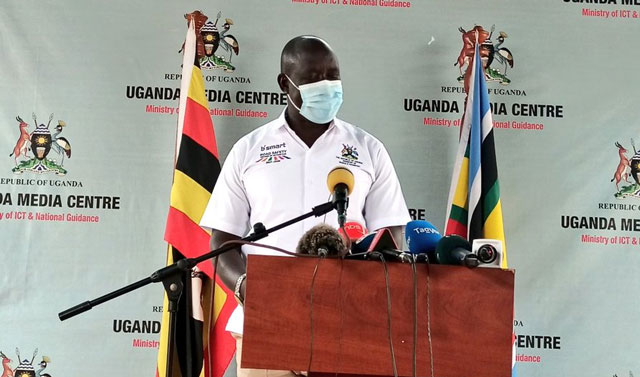
Kampala, Uganda | THE INDEPENDENT | The Ministry of Works and Transport on Friday blamed the delay of the commencement of Lira – Kamdini road reconstruction work on the stringent conditions on environmental and social impact studies set by the World Bank for its loan.
The explanation was given following threats of nude protests by the community instigated by area legislators and local leaders over the deteriorating condition of the road.
The protest promoters described deep potholes on road as unbearable and unsafe for road users.
On Tuesday 18 January, North Kyoga police arrested Issa Otto Amiza, the former Oyam South lawmaker after allegedly getting intelligence reports that he was the ringleader behind the proposed illegal demo about the motorway that has remained appalling since 2009 with at least 98 known accident black spots.
Musa Ecwero, the State Minister of Works and Transport explained that the Government and World Bank have partnered to co-finance the rehabilitation and maintenance of the Lira-Kamdini road section under the North Eastern Road Asset Management Project – NERAMP.
Ecwero told journalists at the Uganda Media Centre that the NERAMP project covers 340 kilometres covering Tororo-Mbale-Lira-Kamdini, to be executed in first and second lots, with the 66 kilometres of Lira-Kamdini road stretch forming part of lot two.
Ecwero says there has been routine maintenance on the entire Tororo-Kamdini corridor, but as an innovative project being piloted in Uganda, the long-term asset management contracts require Output and Performance-Based Contracting – OPRC.
He pointed out that the Lira – Kamdini section requires extra intervention due to the extent of road deterioration with the contractor, Mota-Engil Africa, a Portuguese firm is unable to commence the heavy rehabilitation required due to non-compliance to the requisite environmental and social safeguards.
The World Bank loan conditions require strict compliance to environmental and social standards. For instance, Ecweru cited that one of the conditions require World Bank’s approval of the environmental and social safeguards studies including the construction materials.
Implementation of the environmental and social safeguards is important to ensure the road works do not negatively affect the society in the project area. In the meantime, the contractor has been instructed to intensify the maintenance activities to keep the road motor-able.
Meanwhile, Isaac Menya, the Manager Network Planning under the Uganda National Roads Authority – UNRA attributed the deterioration of roads to various conditions ranging from poor workmanship and maintenance among others that affect its design life.
The Lira-Kamdini highway is known as a main commercial connection route for Lango sub region linking the Uganda-Kenya boarder of Busia through Tororo, Soroti, and Lira to South Sudan via Gulu City.
A December 2018 Global Road Safety Facility report launched by the World Bank recommended improvement of safety measures along the North Eastern Road Corridor to make it safe for users such as increasing the two-lanes to four-lanes with guardrails in major towns.
The report also identified several bottlenecks including rapid urbanization along the corridor, poor road design that doesn’t conform with the geographical landscape; steep embankments, limited speed control measures and recommended use of speed guns, installation of speed humps, and delineation of horizontal curves to enhance safety.
*****
URN
The post MINISTER: World Bank conditions have delayed Kamdini-Lira Road appeared first on The Independent Uganda:.
from The Independent Uganda: https://ift.tt/3G0jn4c
0 Comments